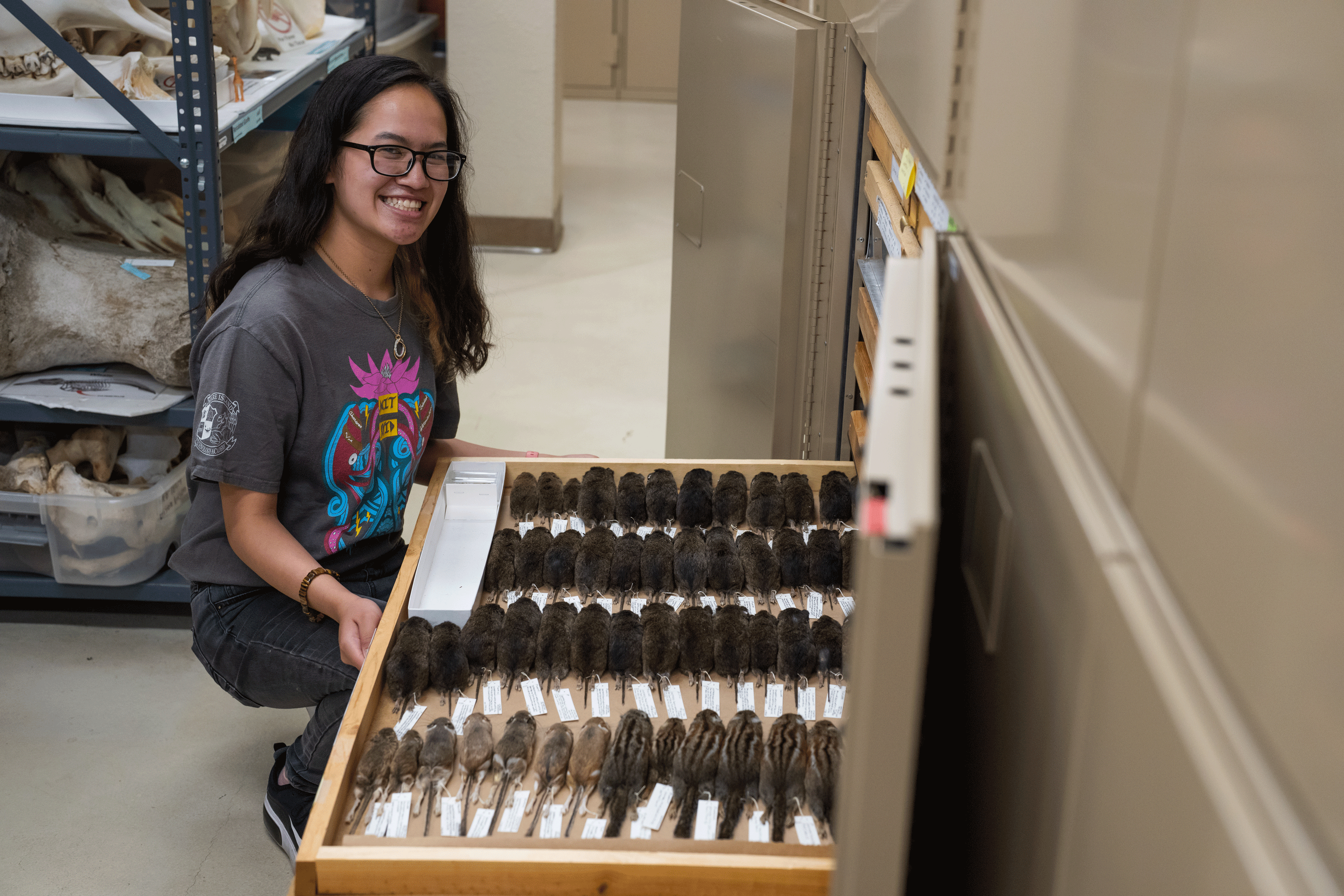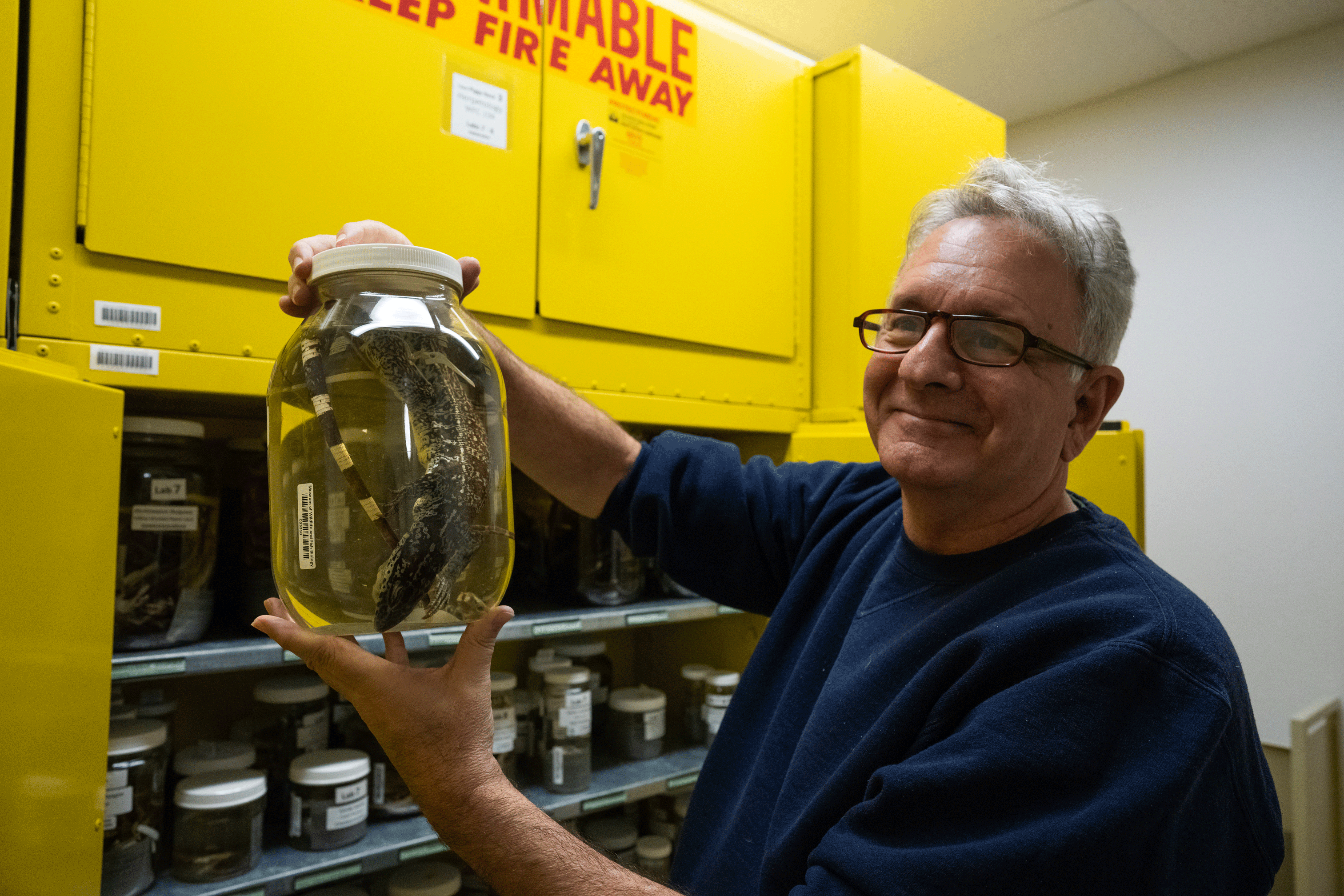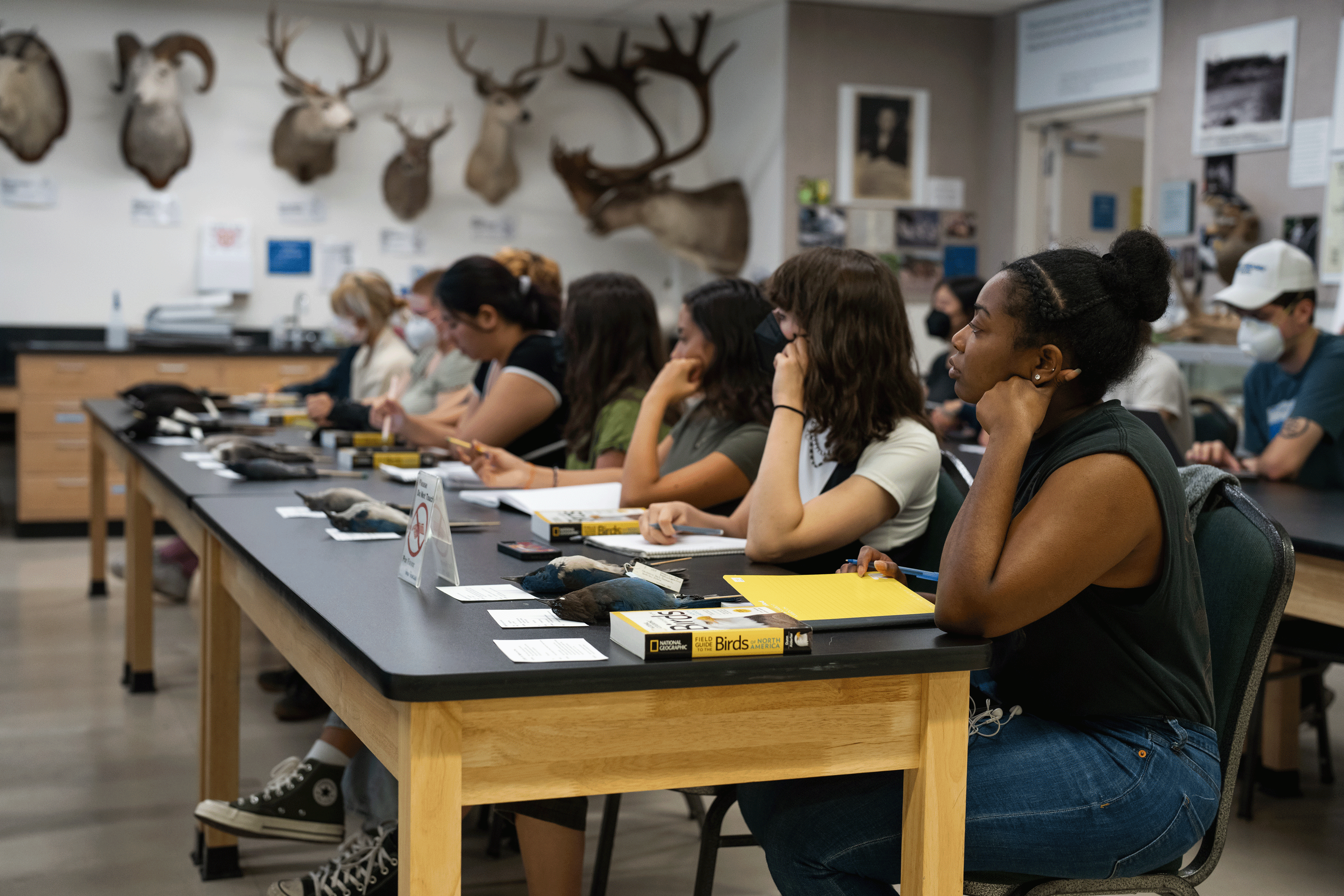
Museum of Wildlife and Fish Biology Celebrates 50th Anniversary
Facility supports education and conservation through hands-on learning, research and public outreach
A male platypus has a paddle-shaped tail, flat bill, sleek furry body and half-inch spurs connected to a venom-secreting gland on each hind leg. They are among the few venomous mammals.
That’s one of the many animal facts visitors may learn when they visit the UC Davis Museum of Wildlife and Fish Biology (MWFB), which is celebrating its 50th anniversary this year.
Of course, Danielle Fradet, a 2020 graduate with a degree in wildlife, fish and conservation biology, already knew that. She’s been fascinated with the platypus since second grade when she made a diorama about the small aquatic mammal. That fascination with wildlife led her to UC Davis. During her freshman year, a visit to the annual Biodiversity Museum Day was her introduction to the museum. Soon after that, she applied, and was accepted, to the museum’s internship program.
“And I never left,” she exclaimed. She’s now working as a junior specialist for the museum, which has played an important role in her education and work as a biologist.
“The museum was, and is, the cornerstone of my Davis experience,” she said.

Hands-on learning
The museum, housed within the Department of Wildlife, Fish and Conservation Biology (WFCB) on the first floor of the Academic Surge building, features a modern collection of vertebrates with more than 60,000 specimens. The museum’s curator, Andrew Engilis, Jr., said specimens are a core component used by faculty and staff to teach about mammals, birds, fish, reptiles and amphibians.
“Specimens are right in front of you, you can touch them and you’re learning differently immediately,” he said. “Once you handle something, your experience is now with that object.”
The museum’s collection includes nearly 14,000 specimens of mammals, most of which are from California and western North America. Some of that collection reflects the work by faculty and campus researchers, who have been involved with the museum for the past 50 years.
According to Engilis, the museum has one of the best collections of waterfowl in the United States. In 2018, the museum received California condor specimens. Condors, which are an endangered species, are among the largest birds in North America and can have a wingspan of up to 10 feet.
“All of our collections have rarities,” Engilis said. “For birds, we have California condors in our collection. There aren’t very many museums that have those.”

Unique opportunities
Students who intern with the museum get immersed in a wide array of hands-on experience, including specimen preparation, curation and wildlife biological surveys.
Elyssa Tabungar is a senior majoring in wildlife, fish and conservation biology who started over the summer as an intern at the museum. She’s been preparing small mammal specimens, including chipmunks, and filling out data tags for each organism.
“My favorite thing about the museum is I’m constantly learning new things,” Tabungar said.
The museum hosts small tours, mostly with local elementary school kids. It also participates in annual campus events, including Biodiversity Museum Day and Picnic Day. Engilis said their exhibits during those events are always well-attended.
“When you show a specimen there’s a connection that happens,” Engilis said. “They start telling stories of the natural world that relate back to the museum and so the museum is a catalyst for bringing people closer to nature.”
Engilis has been the MWFB curator for the past 22 years. He succeeded the founding curator, Ronald Cole, who started the museum in 1972. Engilis, who graduated in 1982 with a bachelor’s degree in avian science from UC Davis, was an intern at the museum as an undergrad. As Engilis reflects on his time at the museum, he’s proud of how expansive the museum has become.
“When I started it had 35 cases of birds, and now we have 200 cases of birds.” he said. “We have this vibrant and diverse program.”
The museum assists researchers on and off-campus, as well as scientists around the world, by loaning its skins, skeletons and fluid-preserved specimens. Its tissue collection is comprised of more than 11,500 specimens and is often used by researchers who are looking at evolutionary processes or speciation.

Looking ahead
Looking ahead at the next phase of growing the museum, Engilis said he’s hopeful that the facility can find a bigger home on campus with more space to display its exceptional items to encourage more public interaction.
“I would like to see us have a facility that actually has exhibit halls where we can bring the public in whenever they want to come in and tour,” he said. “I think bringing more people to the museum is what I see as the next step for us.”
He’s conducted numerous research expeditions around the world through the years, but Engilis said his time spent as curator has been one of his most cherished adventures.
“My connection to the collection is so deep because I’ve been involved for so many of those 50 years,” he said. “It means a lot to me. It’s not just a collection of specimens, it represents the personal adventure of my life.”
A reception to celebrate the 50th anniversary will be held on October 13 from 5:30 to 7:30 p.m. at the museum. The free event includes speakers, appetizers and beverages, displays and guided tours of the facility. Register online.
Media Resources
- Andrew Engilis, Museum of Wildlife and Fish Biology, aengilisjr@ucdavis.edu
- Tiffany Dobbyn, College of Agricultural and Environmental Sciences, tadobbyn@ucdavis.edu